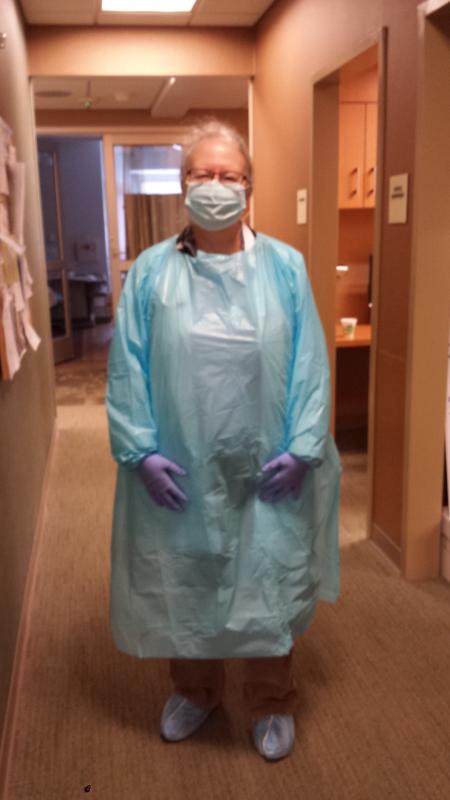Ebola in the US: What you need to know
The first case of Ebola in the United States was recently announced, with a patient in Dallas who traveled to the U.S. from Liberia. The resultant hysteria and xenophobia (dislike or fear of foreigners) prompts this reminder. There is no need to panic.
Ebola is not transmitted before a patient develops symptoms. Ebola is transmitted by contact with infectious secretions from body fluids or blood. It has not shown airborne transmission.
In the U.S., Ebola does not pose the same magnitude of risk as it does in Africa. There was profound poverty in the affected areas of West Africa and a very limited infrastructure even before the epidemic hit.
Liberia had just one doctor for nearly 100,000 inhabitants before the outbreak. Since then, there have been 211 deaths among some 375 infected healthcare workers in Africa (35 in Guinea, 89 in Liberia, 5 in Nigeria, and 82 in Sierra Leone), according to WHO. Roads, electricity and basic supplies are also in extremely short supply.
The U.S. has a history of a good public health infrastructure. As Dr. Thomas Frieden, director of the CDC, noted in his press conference about the Dallas, Texas case, the skills required to control Ebola in the U.S. are basic, standard public health skills — not something new, exotic, technically difficult, or never before tried.
It requires bread-and-butter, old-fashioned contact tracing of people exposed to a contagious patient, observation and isolation.
And while specialized containment facilities have been used so far in the U.S., basic isolation is something we do everyday in hospitals. With this article, for example, is a photo of me garbed to enter an isolation room for a patient with CRE (carbapenem-resistant Enterobacter).
Not Ebola, but an increasingly common, often fatal bacteria most commonly acquired in hospitals, and associated with a 40-50 percent death rate. I wish more people would get excited about CRE or other highly resistant bacteria (superbugs).
Hospital-acquired infections are far more likely to kill you in the U.S. than Ebola is.
Some have called for canceling flights and closing borders. This is not only histrionic, but would be ineffective.
The CDC predicts that by the end of January 2015, western Africa could have as many as 1.4 million cases. With global travel, there is no way to prevent someone asymptomatic but brewing the disease from entering the country, especially as the incubation period can go up to 21 days. And quarantines have been shown to backfire and worsen epidemics.
Relative risks
Let’s put this Ebola case in perspective. In the U.S., you are far more likely to be killed by an irresponsible gun owner than Ebola. Just in the year after Newtown, Connecticut there were more than 12,000 deaths from guns. There have been 16,647 gun injuries since Jan 2014.
Influenza kills 36,000 people every year and sends about 200,000 to the hospital. You get flu from coughs and sneezes — it is more easily transmitted than Ebola.
Measles: There were 592 cases as of Aug. 1 in the U.S. per 1,000 infections; 1-2 children will die and one will be injured for life from encephalitis.
Before vaccinations against measles started in 1963, about 3-4 million people got measles each year in the United States. Of those people, 400 to 500 died, 48,000 were hospitalized, and 1,000 developed chronic disability from measles encephalitis.
You can transmit measles to innocent, unprotected kids who are too young to be vaccinated or who have contraindications (e.g., are on chemotherapy) and kill them — just by a cough or sneeze.
Patients with measles are infectious for four days before they develop a rash, as well as for days after. “Measles is so contagious that if one person has it, 90 percent of the people close to that person who are not immune will also become infected with the measles virus,” the CDC’s website states. The saddest cases I have ever seen were children dying from vaccine-preventable diseases.
In contrast, Ebola is not infectious until symptomatic, and then requires close contact for transmission.
HPV: 79 million Americans (more people than live in California, Texas, and Illinois combined) are currently infected with human papillomavirus, which can cause cancers of the cervix, head and neck — and is now vaccine preventable.
Food-borne infections affect 1/6 (48 million) Americans annually, send 128,000 to the hospital, and kill 3,000.
The other thing with Ebola — our risk of dying from it, even if infected, is far less than occurs in Africa. This is because we have better nutrition and health in general, are not co-infected with parasites or HIV, and have better supportive care. Part of the extremely high mortality in Africa is the inability to provide even basic intravenous fluid replacement.
Infection control
What we need to do with Ebola is the same as for any other infectious disease — “universal precautions.” We need to place close attention to hygiene and disinfection, and continue careful isolation of patients ill with infections in hospitals. This is effective, when done properly.
One of my concerns however, from working in a variety of hospitals across the country, is that hospitals are increasingly taking short-cuts with infection control. I have voiced this concern previously regarding the control of superbugs — many hospitals are increasingly short-staffed, and nurses, in particular, are responsible for more patients than they used to be.
Better hospitals have good isolation equipment and ongoing infection control training. They provide adequate personal protective equipment (PPE) and dedicate supplies like blood pressure cuffs and stethoscopes to specific isolation rooms. Others are penny wise and pound foolish, refusing to provide dedicated isolation equipment or thorough training, citing cost concerns.
I call on the CDC and State Health Departments to focus some of their attention away from bioterrorism preparedness and Ebola, to remedial infection control 101. That is the way they can help protect the country from any infectious diseases threat.
Dr. Frieden: “Bottom line, I have no doubt that we will control this importation or case so that it does not spread widely in this country .... It is certainly possible that someone who had contact with this individual could develop Ebola, but there is no doubt in my mind it will stop here.” I agree — if all hospitals beef up their infection control training and practices.
In the meantime, instead of fueling xenophobia and conspiracy theories, if people want to help control this epidemic, a good start would be by relaying accurate information and donating to one of the great groups working to stem the outbreak in Africa, such as Doctors without Borders.
Event Date
Address
United States
























